Art & Exhibitions
With a ‘Car Crash’ of Biennials Now Planned for 2021, Curators Are Being Forced to Rethink Mass Art Shows for the Social-Distancing Era
Faced with an uncertain future, biennials are having an existential crisis.
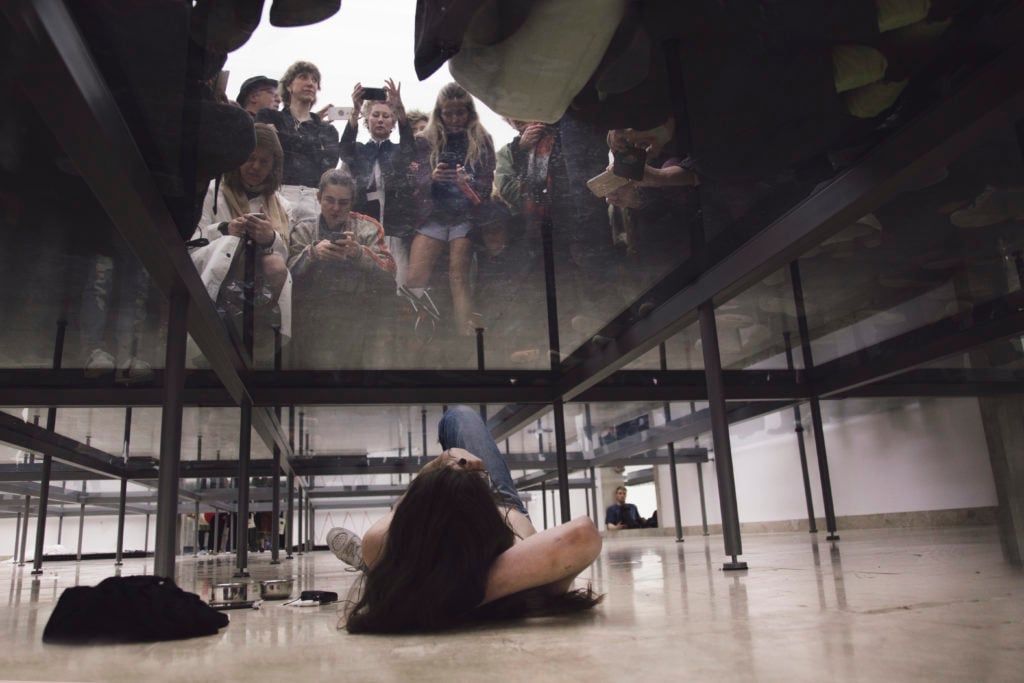
Faced with an uncertain future, biennials are having an existential crisis.

Naomi Rea

Not long ago, many in the art world wondered if we had hit peak biennial. The year 2017 saw so many international art exhibitions crowding the calendar that it was nicknamed “art-maggedon.” Now, following a wave of postponements due to the public-heath situation, it seems that 2021 may give 2017 a run for its money. There are at least 20 major biennials—more biennials than months—so far scheduled for next year, many of which were originally due to take place in 2020.
The stakes are high for these months-long events, which are often years in the making, require extensive travel, complicated funding arrangements, and the movement of sizable works of art. Few curators know exactly how these festivals will adapt to the social-distancing era, or the economic crunch that is headed their way.
“It is not easy to pull off a biennial right now,” said Fatos Üstek, the director of the Liverpool Biennial, which was postponed a few months shy of its scheduled opening July date. The public-health situation “presents the art world with a crisis unlike any it has faced before,” she said.
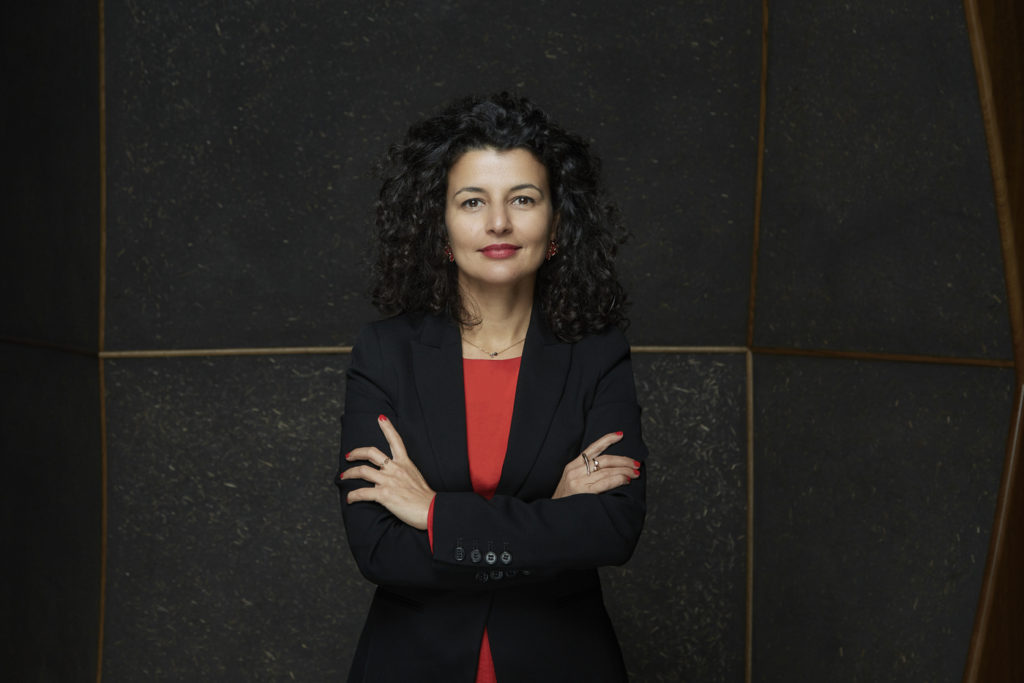
Portrait of Fatos Ustek. Photo by Christa Holka.
Before the new dates are finalized, Üstek—as well as many of her curator peers—must consider a head-spinning number of novel issues. She must revise the performance and public programs—which have emerged as important elements of many biennials in recent years—as well as any commissions that require people to gather in close proximity. While Üstek stressed that there will be no changes to the artist list, specific artworks may need to be re-evaluated.
And that is just the beginning. When will borders reopen, and when will flights begin operating regularly and affordably? What health and safety regulations need to be taken into account? Without a widespread vaccine or reliable antibody testing, when will the art world be comfortable congregating and traveling for these kinds of events? How can biennials adapt to fit a future we can’t fully imagine?
Where yet more biennials can fit into an increasingly overloaded calendar is another quandary. The challenge of drawing an international audience that is spoilt for choice is one thing, but there is also a matter of coordinating with artists who might now be double booked. “There will be multiple biennials and festivals in the UK and the world in 2021,” Üstek said. “You could say almost a car crash of cultural events.”
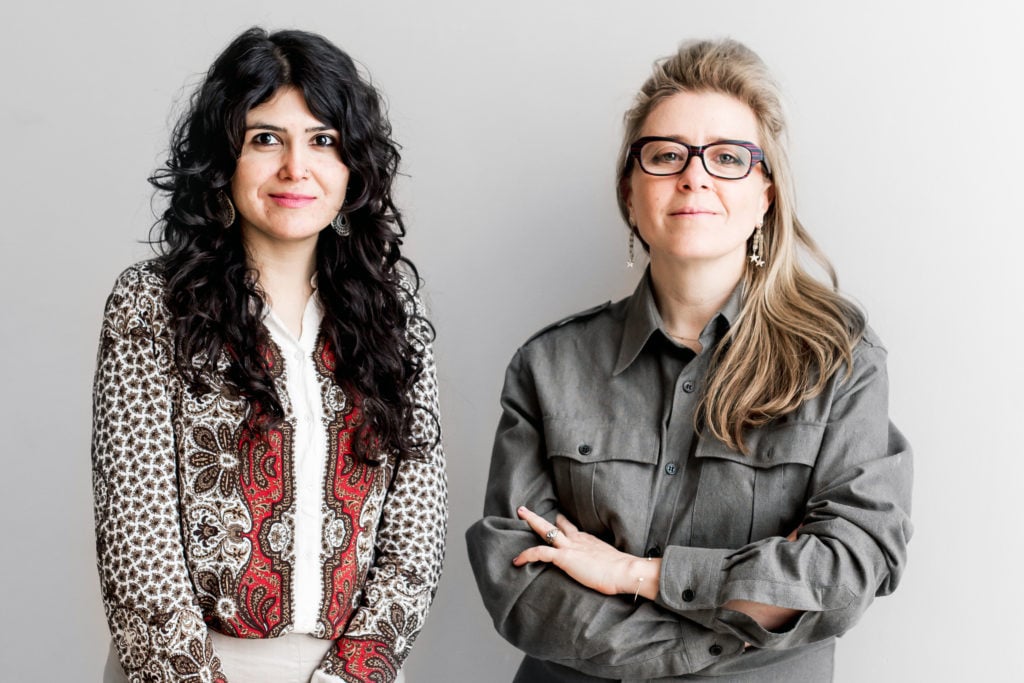
Portrait of the artistic directors of the Gwangju Biennale, Natasha Ginwala and Defne Ayas. Photo by Victoria Tomaschko.
The organizers of the Gwangju Biennale in South Korea are facing the same challenge. Their exhibition was meant to open in September, and while they held on for as long as they could, artistic directors Natasha Ginwala and Defne Ayas ultimately determined that problems with transporting artworks and halted international travel made organizing the biennale this year an impossible task.
The rescheduled Gwangju Biennale is now due to be held in February next year, a timetable some might say is optimistic given the uncertainty of the crisis—not to mention the fact that a second wave of the outbreak in South Korea caused museums and galleries to shut down again last week.
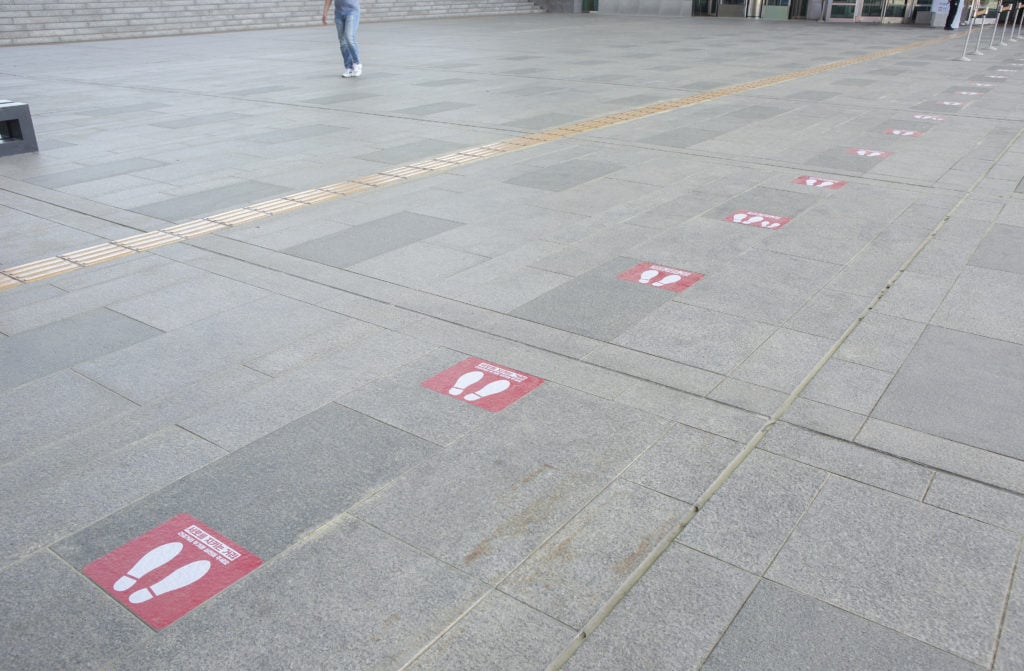
Markers show visitors where to stand for social distancing in Seoul. Photo by Jong Hyun Kim/Anadolu Agency via Getty Images.
The knock-on effect of the sliding dates has already displaced some biennials that were scheduled for 2021 in the first place. The Venice Biennale, widely considered to be the most significant international biennial, has been pushed to 2022 after the architecture biennial, which was meant to open this year, took its spot in 2021. Others are also hedging their bets and moving their dates to 2022, which could be a risky strategy in a rare year when the quinquennial documenta exhibition and now the Venice Biennale are both scheduled to take place.
The Lyon Biennale, which was originally slated for 2021, has also been pushed to 2022 after the city’s dance biennale was moved back from this year to next. But artistic directors Sam Bardaouil and Till Fellrath feel the move will also give them a chance to better integrate the current moment. “It will be important to let some time pass, and to leave some distance to create in order to create a response that is not only confined by a sense of immediate urgency, but will rather have a much broader and long-term impact in a meaningful way,” they said.
The calendar isn’t the only obstacle facing biennial organizers; another is funding. Cities often invest significant funds in these events because they generate tourism. But in a future when international travel has cratered and local budgets have been redirected to relief, they may no longer seem so appealing.
“Funding is one of the areas that we are working hard to rebalance,” Üstek said, adding that the Liverpool Biennial was about to host a reception to launch a new fundraising initiative when the crisis hit. In terms of public funding, the Arts Council England has committed to extending its support of the biennial, and Liverpool City Council also committed to the full grant.
But Üstek said that public support alone will not be enough to finance the ambitious commissions and programming she has planned. “It will be a tougher environment if these individuals and foundations decide to fund less and even pause until the economy comes back to a healthy balance,” she said.
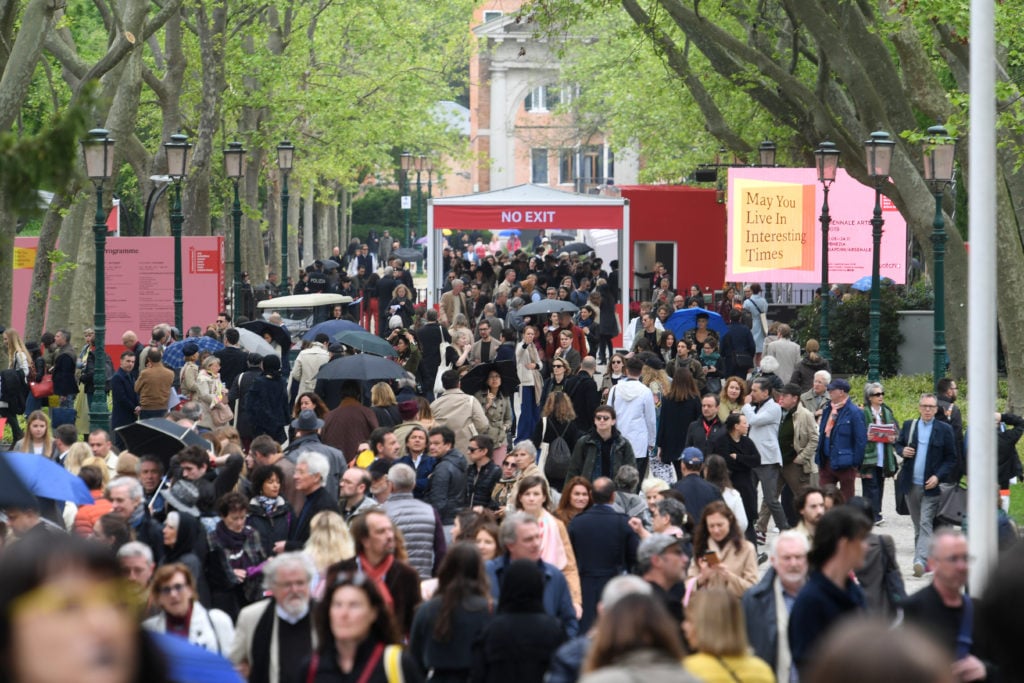
Throngs of people pushing to get into the Venice Biennale. Photo by Felix Hörhager/picture alliance via Getty Images.
The organizers of the Lyon Biennale are facing similar hurdles. “A priority for many of the biennial’s stakeholders is to address the current health crisis, and understandably many institutions and private individuals are prioritizing more urgent needs,” Bardaouil and Fellrath told Artnet News.
The artistic directors added that they were already careening toward the deadlines for funding applications, which can close more than a year before the opening of an exhibition, despite not having been able to visit the city of Lyon or any of the artists they had been considering for inclusion. They are optimistic about having an extra year to source funding. “We have already gotten many emails of support from potential donors, pledging their support, and stressing the importance of the arts and of supporting the artists in our societies,” they explained.
With the future uncertain, some organizers have decided to push ahead with events scheduled for this year, with an understanding that the models that worked in the past will not work now. They suggest that, rather than the splashy international convenings we have grown used to, the biennials of the future will be more homespun, smaller scale, and geared towards a local audience.
The Yokohama Triennale is going ahead as scheduled on July 3, and organizers are planning to build up the exhibition piece by piece as restrictions ease, hoping to see it complete by the time it closes in October. The delayed Bienal de São Paulo is also going to open in October, focused on drawing a local audience.
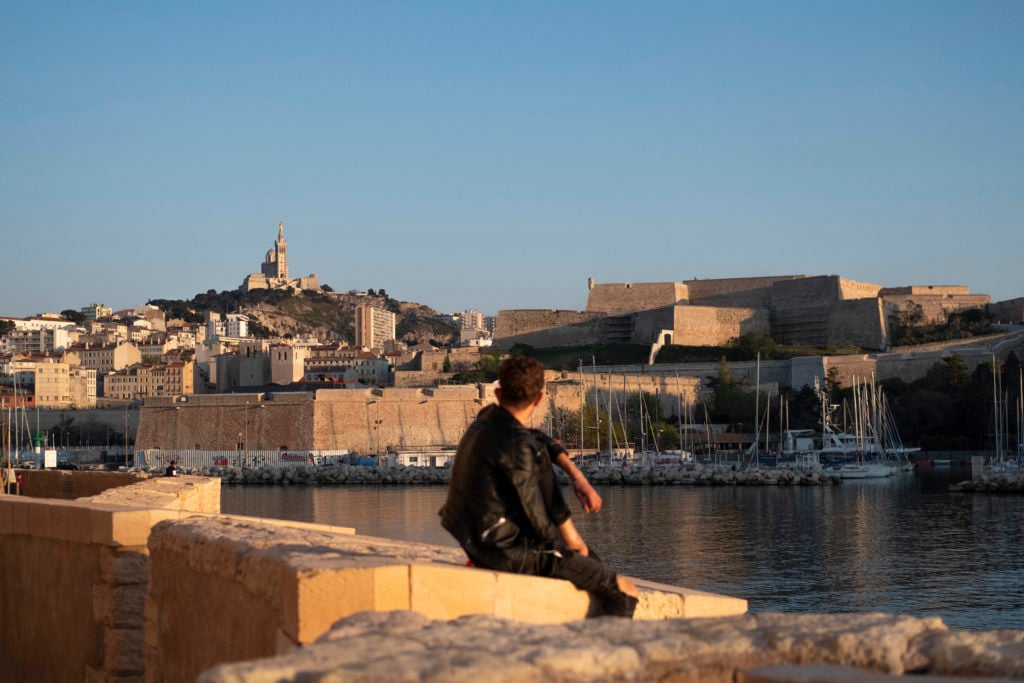
View of Notre-Dame de la Garde basilica and of Old Port of Marseille in Marseille, France. ©VOST/Manifesta.
Similarly, Manifesta 13, which was originally scheduled to open in June, will now debut a scaled-down version in Marseille at the end of August. Manifesta’s founder, Hedwig Fijen, told Artnet News that the itinerant model of the biennale, which is held in a different city each edition, makes them well positioned to adapt to the uncertainty of the current climate. Like some of the other biennials moving forward this summer, they will spread programming out over time to accommodate shifting policies on social distancing, mobility, loans, traveling, as well as a possible second wave of lockdown.
“Rather than organizing exhibitions for international visitors, Manifesta’s focus has gradually shifted to supporting existing local initiatives for urban and social transformation processes,” Fijen said, adding that collaborations like these help to build up local cultural infrastructures that can continue long after the biennial has passed through. Manifesta is not interested, she said, in being “an international player in the globalized curatorial circus.”
Scheduling might not be the only reason biennials become more local. These events have ballooned over the past two decades as they became seen as potential economic engines, both by cities hoping to generate tourism and boost their cultural profile and by private actors such as galleries, which began funding ever more flashy projects to offer their artists a bigger platform. (While the Venice Biennale is not seen as a commercial event, many artists’ markets are boosted by inclusion, and in the early years of the exhibition, it even had its own sales office.) All told, there are 270 global biennials listed in the Biennial Foundation’s directory.
“With restricted budgets, exhibitions will stay on for longer and blockbuster shows will be less attractive and financially viable to produce due to the loss of income through ticket sales,” Üstek said, adding that exhibitions will be scaled down because social distancing measures will also mean that fewer artworks can be shown at once.
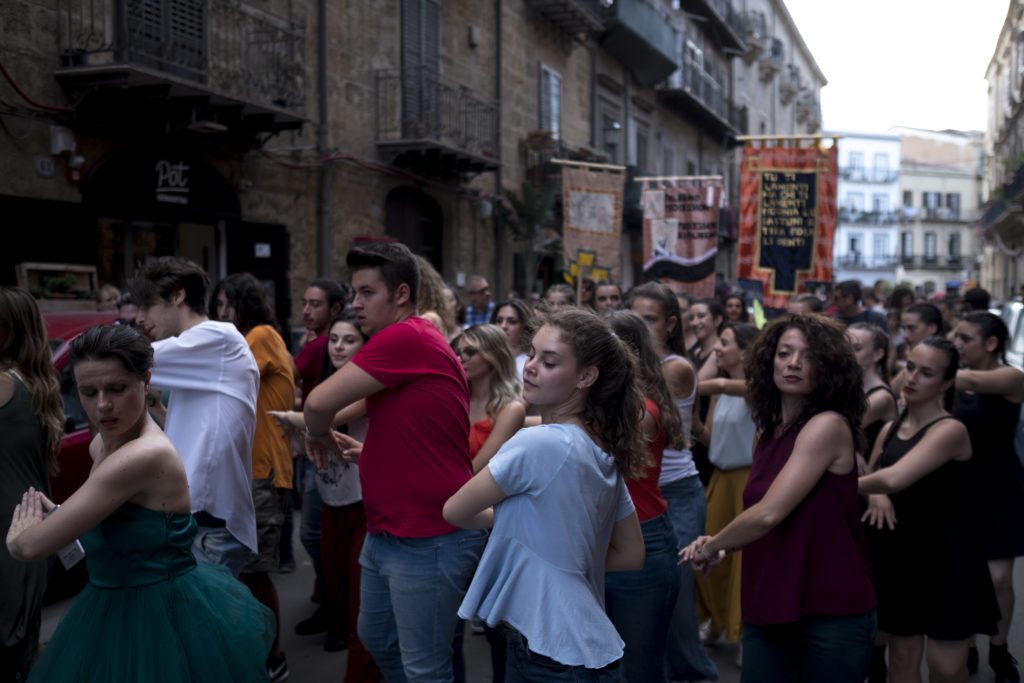
Marinella Senatore, Palermo Procession (2018). ©Manifesta. Photo by Francesco Bellina.
Biennials and art institutions might also start engaging more local and national artists to reduce costs, a trend that has already begun in some cities, like São Paulo and Shanghai, because of complex customs rules and high taxes. At the Liverpool Biennial, Üstek says that climate change concerns were also factored into the planning, with 90 percent of shipments coming from within the EU and the UK.
But amid all these changes, the director does not predict that all biennials will become local exercises, as she says their international outlook is their strength. “Every biennial forms a relationship with its city, raises concerns through its context-specificity, the history and culture of its country,” she said. “However, it brings an amalgamation of world-perspectives, different practices, ways of seeing and being that cannot be compromised.”